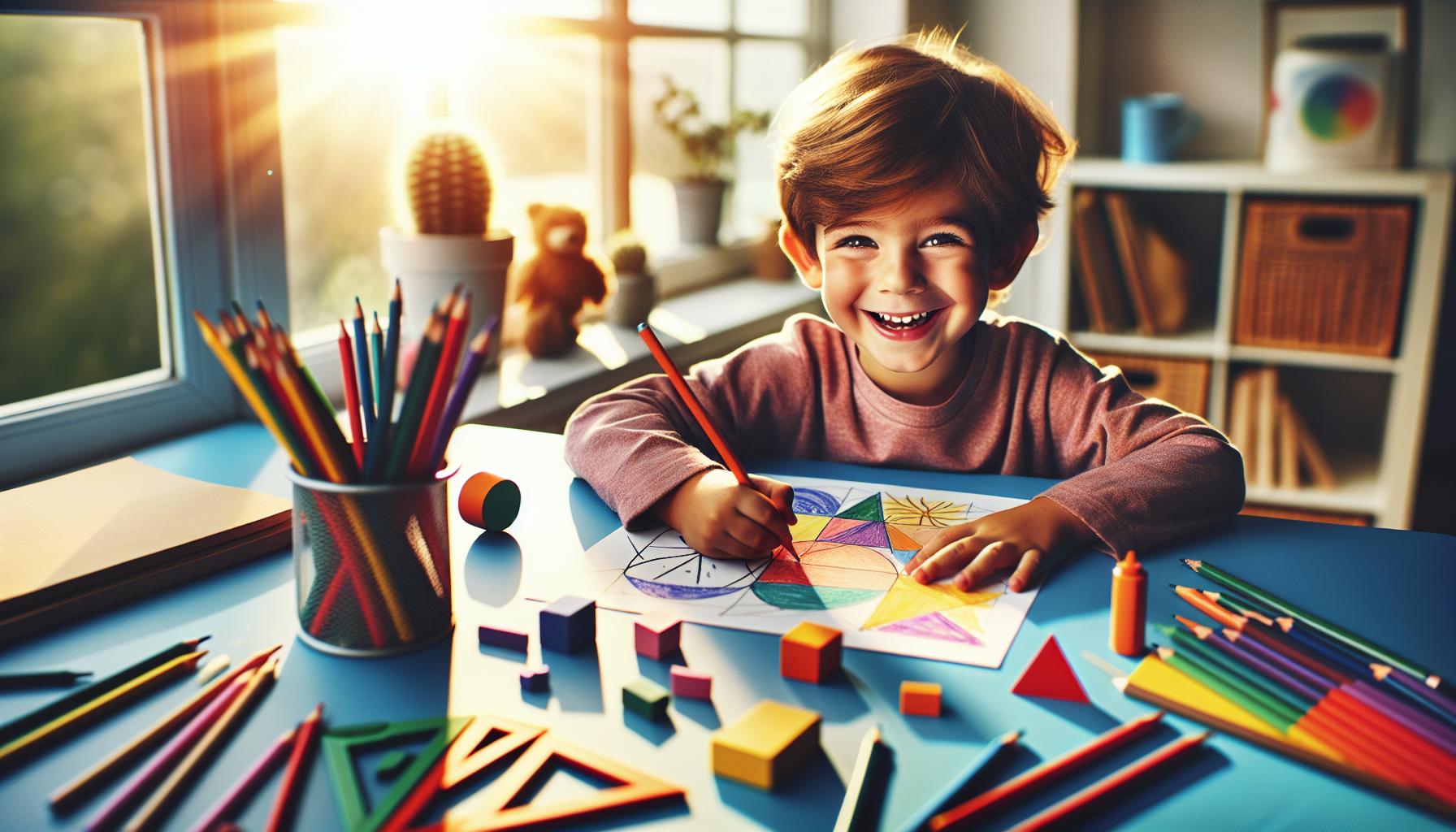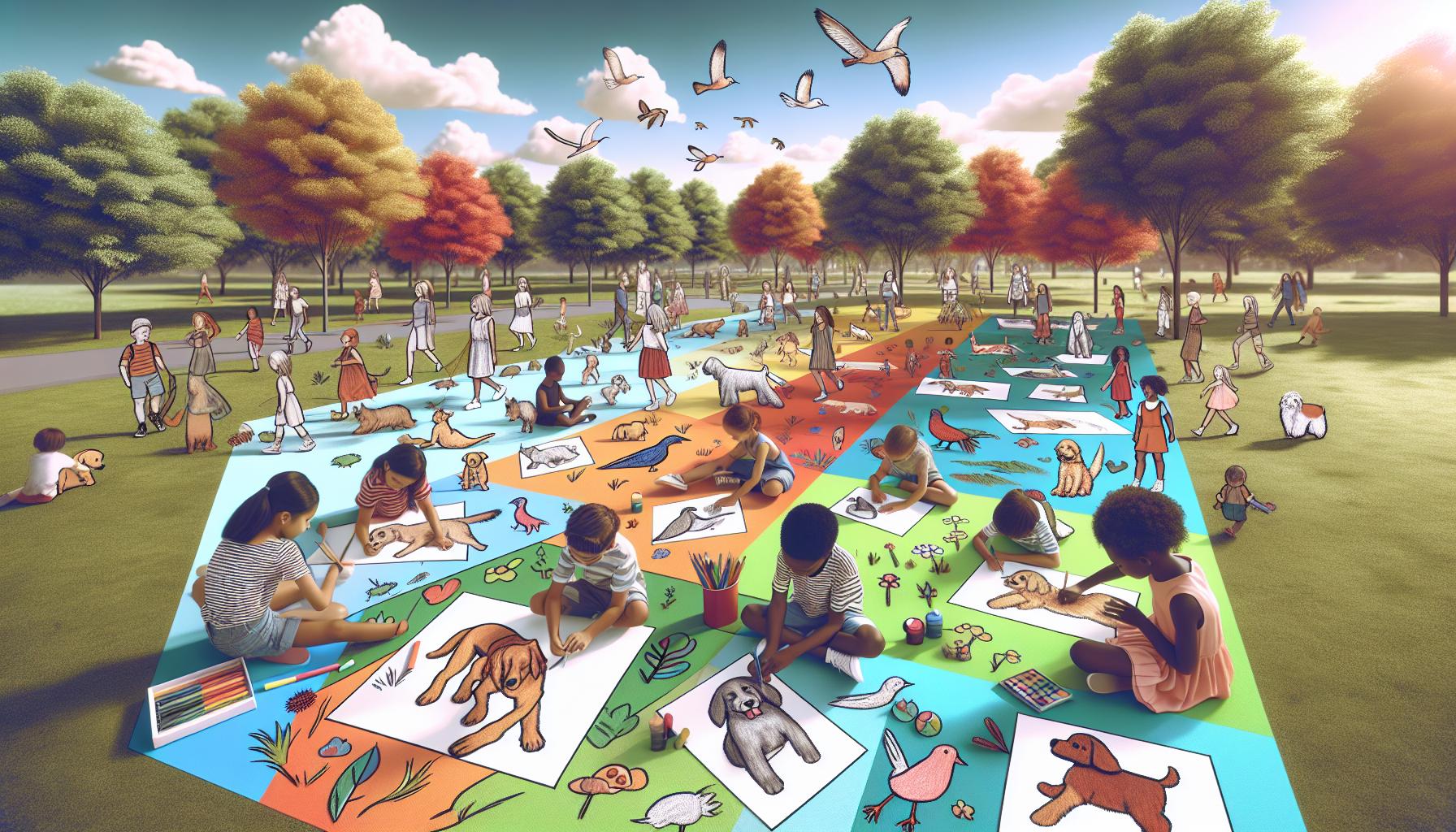Drawing has always been a magical gateway for children to express their creativity and imagination. With facil:qertas8-fpc= dibujos para niños, kids can now explore an exciting world of easy-to-follow drawing tutorials designed specifically for young artists.
This innovative drawing method transforms complex artistic concepts into simple, step-by-step instructions that make learning fun and engaging. Parents and educators love how it builds confidence in children’s artistic abilities while developing fine motor skills and spatial awareness. Whether your little one dreams of drawing dinosaurs, superheroes, or cute animals, this unique approach breaks down each drawing into manageable pieces that even the youngest artists can master.
Facil:qertas8-fpc= Dibujos Para Niños
Easy drawings for kids feature simple shapes, basic lines and minimal details that children ages 4-12 can recreate. These drawings include stick figures, geometric animals and basic cartoon characters with 3-5 steps per drawing.
Here’s what makes drawings kid-friendly:
- Uses fundamental shapes like circles squares triangles to form recognizable objects
- Incorporates straight lines curved lines for outlines details
- Features symmetrical designs that enhance visual learning
- Includes numbered steps with clear starting reference points
- Focuses on popular subjects like animals vehicles characters
Common beginner-level drawings include:
| Subject | Key Elements | Typical Steps |
|---|---|---|
| Animals | Basic shapes body parts | 3-4 |
| Faces | Circle eyes mouth | 2-3 |
| Houses | Square triangle windows | 3-4 |
| Cars | Rectangles circles wheels | 4-5 |
| Trees | Triangle circle trunk | 2-3 |
The facil:qertas8-fpc= method breaks down drawings into digestible components:
- Starting with core shapes as foundations
- Adding defining features step by step
- Including simple shading techniques
- Creating proportional relationships between elements
- Teaching basic perspective concepts
These drawings help develop essential skills:
- Hand-eye coordination through guided line work
- Spatial awareness via shape placement
- Fine motor control with detailed elements
- Pattern recognition through repeated shapes
- Visual memory through step sequences
Each drawing teaches fundamental artistic concepts while maintaining simplicity appropriate for young artists.
Essential Drawing Materials for Children

Creating art with facil:qertas8-fpc= dibujos para niños requires specific materials that enhance the learning experience. These tools support children’s artistic development while maintaining safety and ease of use.
Basic Art Supplies
Children’s drawing materials include white drawing paper, colored construction paper, crayons, colored pencils, washable markers, and erasers. A 24-pack of crayons offers sufficient color variety for beginners, while triangular-shaped pencils provide better grip control. Non-toxic markers with broad tips enable smooth coloring and precise line work. Additional supplies include:
- Drawing pencils (2B, 4B) for sketching basic shapes
- Large white erasers for clean corrections
- Spiral-bound sketchbooks (9×12 inches) for organized practice
- Child-safe scissors for paper crafts
- Washable glue sticks for mixed media projects
Setting Up the Drawing Space
A dedicated drawing area enhances focus and creativity during facil:qertas8-fpc= drawing sessions. Essential elements include:
- Natural lighting from windows or LED desk lamps
- Flat surfaces at child-height level (20-24 inches)
- Storage containers for organizing supplies
- Protective table coverings like vinyl mats
- Display area for finished artwork
- Easy access to water for cleanup
- Comfortable seating with proper back support
- Ventilated space for marker use
The drawing space remains clutter-free with designated supply zones. Storage solutions include clear containers labeled with pictures for easy identification. Wall-mounted paper holders keep materials accessible yet organized.
Simple Drawing Techniques for Beginners

Drawing mastery starts with understanding fundamental techniques that build confidence and skill. These methods complement the facil:qertas8-fpc= approach by breaking down complex subjects into manageable components.
Starting With Basic Shapes
Basic shapes form the foundation of all drawings. Circles create heads, squares transform into houses, triangles become mountains or roofs. The facil:qertas8-fpc= method utilizes five primary shapes: circles, squares, triangles, rectangles and ovals. Combining these shapes creates recognizable objects – two circles become a snowman, while a square topped with a triangle forms a house. Artists practice drawing these shapes individually, then learn to connect them. Drawing exercises focus on size consistency and proper placement, starting with large shapes and adding smaller details. Overlapping shapes create depth, while repeated shapes establish patterns and rhythm in drawings.
Step-by-Step Drawing Methods
Breaking down complex drawings into sequential steps makes learning systematic and achievable. Each step builds upon the previous one, creating clear visual progression. Artists start with light guidelines using basic shapes, then add defining lines and details. The facil:qertas8-fpc= method presents 3-5 clear steps for each drawing:
- Sketch the main shape outline
- Add secondary shapes and guidelines
- Draw specific features and details
- Refine lines and erase guidelines
- Add final touches like texture or shading
This structured approach helps artists understand how complex drawings evolve from simple beginnings. Reference points and proportional relationships between elements ensure balanced compositions.
Popular Easy Drawing Subjects for Kids

Kids find certain drawing subjects more engaging than others, making them perfect starting points for developing artistic skills. These popular subjects combine basic shapes with imaginative elements that capture children’s interest.
Animals and Creatures
Animals represent the most popular drawing subjects for children ages 4-12. Basic animal drawings start with simple circles, ovals, and triangles to create recognizable features. Cats incorporate three circles – one for the head, body, and tail base. Dogs use oval shapes for the body and circular heads with triangular ears. Sea creatures like fish utilize basic oval shapes with triangular fins. Birds combine circles with triangular beaks and wing shapes. Farm animals such as cows, pigs, and chickens follow similar shape-based patterns, making them accessible for young artists. The facil:qertas8-fpc= method breaks these animal drawings into 3-4 clear steps, focusing on key identifying features like ears, tails, and facial expressions.
Nature and Landscapes
Natural elements provide foundational subjects for children’s artwork. Trees start with a triangular crown and rectangular trunk. Mountains emerge from overlapping triangles with straight or wavy lines. Flowers combine circles for centers with oval petals radiating outward. Suns feature a central circle with straight lines or triangular rays. Clouds take shape through connected curved lines or circular segments. The facil:qertas8-fpc= method presents these landscape elements in 3-step sequences that build from basic shapes to complete scenes. Starting with horizon lines, children learn to layer elements like grass, trees, and sky features to create complete outdoor scenes.
Tips for Teaching Children How to Draw
Teaching children to draw requires patience and structured guidance. The facil:qertas8-fpc= method incorporates specific strategies to help young artists develop their skills effectively.
Building Confidence Through Practice
Regular drawing sessions establish a strong artistic foundation. Children gain confidence by starting with simple shapes and progressing to more complex designs in 3-4 steps. Setting achievable goals, such as completing one drawing per day, builds mastery through consistent practice. Positive reinforcement enhances learning when children master basic shapes like circles squares triangles. The facil:qertas8-fpc= method introduces new techniques gradually, allowing children to perfect each skill before advancing. Creating a portfolio of completed artwork provides tangible evidence of progress, encouraging continued artistic development.
Making Drawing Fun and Engaging
Interactive drawing sessions transform learning into an enjoyable experience. Children respond to themed drawing challenges such as “underwater creatures” or “space adventures.” Drawing games like “finish the doodle” or “drawing charades” incorporate play into artistic practice. Group drawing activities foster social interaction while developing creative skills. Timer-based exercises, lasting 5-10 minutes, maintain focus without causing fatigue. Art supplies in varied colors textures motivate exploration experimentation. Simple rewards charts track progress through different drawing levels, creating achievement milestones. The facil:qertas8-fpc= method includes fun elements like connecting dots drawing mirror images completing patterns.
| Drawing Activity | Time Duration | Skill Level |
|---|---|---|
| Shape Basics | 5-10 minutes | Beginner |
| Animal Drawing | 10-15 minutes | Intermediate |
| Scene Creation | 15-20 minutes | Advanced |
The facil:qertas8-fpc= method revolutionizes how children learn to draw by breaking down complex art into simple manageable steps. Through its structured approach kids develop essential artistic skills while building confidence in their creative abilities.
This innovative drawing system combined with the right materials and supportive environment helps young artists flourish. Its focus on fundamental shapes basic techniques and engaging subjects makes artistic expression accessible to children of all skill levels.
As kids continue their artistic journey with facil:qertas8-fpc= they’ll discover the joy of creating while developing valuable skills that extend far beyond the drawing page. This proven method truly opens the door to a lifetime of creative expression.

